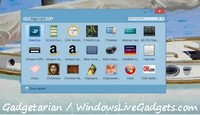Healthy PC tips to avoid discomfort and fatigue
According to Microsoft, whether you are working or playing, it is irtant to avoid awkward postures and position your body comfortably. Not only can this improve your overall productivity, it may help you avoid MSDs (musculoskeletal disorders). Keep in mind that changing your posture during extended tasks may also help you avoid discomfort and fatigue.
Adapt your surroundings and arrange your computing equipment to promote a comfortable and relaxed body posture. Use a chair that supports your lower back. Adjust your work surface and chair height to assume a comfortable and natural body posture. Clear away items from beneath your desk to allow comfortable leg positioning and movement. Use a footrest if your feet do not rest comfortably on the floor.
Place your keyboard and mouse or trackball at the same height; these should be at about elbow level. Your upper arms should fall relaxed at your sides. When typing, center your keyboard in front of you with your mouse or trackball located close to it. Place frequently used items comfortably within arm’s reach.
Keep your wrists straight while typing and while using a mouse or trackball. Avoid bending your wrists up, down, or to the sides. If your keyboard has legs, extend them if this helps you maintain a comfortable and straight wrist position. Type with your hands and wrists floating above the keyboard, so that you can use your whole arm to reach for distant keys instead of stretching your fingers.
Position the top of the screen near eye level. Bifocal wearers may need to lower the screen or talk to a qualified health professional about glasses customized for computer work. Center your monitor in front of you. If you refer to your documents more frequently than your monitor, consider placing your documents directly in front of you and the monitor slightly to the side. Consider using a document holder to position your documents near eye level.
Position your monitor about an arm’s length away from you when seated comfortably in front of it. Avoid glare by placing your monitor away from light sources that produce glare, or use window blinds to control light levels. Remember to clean your screen. If you wear glasses, clean them also. Adjust your monitor’s brightness and contrast. Adjust onscreen front sizes to make viewing more comfortable for you, if your computer program has this feature.
Type with a light touch, keeping your hands and fingers relaxed, because it takes little effort to activate keyboard keys. Use a light touch when clicking a mouse button or when using a joystick or other gaming controller. Hold the mouse with a relaxed hand and do not grip the mouse tightly. Avoid resting your palms or wrists on any type of surface while typing. The palm rest, if provided, should only be used during breaks from typing. Relax your arms and hands when you are not typing or using your mouse. Do not rest your arms and hands on edges, such as the edge of your desk. Adjust your chair so the seat does not press into the back of your knees.
Plan your work and play so that you are not doing the same thing for extended periods of time (such as performing the same activity or using the same part of your body). Use different input devices, such as your mouse and keyboard, to accomplish the same task. For example, to perform a scrolling task, you can use the wheel on the mouse and the arrow keys on the keyboard. Work more efficiently by using software and hardware features to reduce your effort and increase your productivity. For example, you can press the Windows logo key to open the Windows Start Menu.
Eat a balanced diet and get adequate rest. Learn to manage stress. One way to reduce stress at work is to plan your work area and schedule so that noise and distractions are kept to a minimum.
